
Copernical Team
Sidus Space fulfills order and supplies key components for NASA's Mobile Launcher 2
 Sidus Space (NASDAQ: SIDU), a Space and Data-as-a-Service satellite company, has successfully delivered two electronic LCS cabinets to Bechtel as part of NASA's mobile launcher 2 project. These cabinets are essential to the Launch Control System and signify a major milestone in Sidus Space's involvement in NASA's Artemis Campaign, which focuses on lunar exploration and colonization. Sidus Space
Sidus Space (NASDAQ: SIDU), a Space and Data-as-a-Service satellite company, has successfully delivered two electronic LCS cabinets to Bechtel as part of NASA's mobile launcher 2 project. These cabinets are essential to the Launch Control System and signify a major milestone in Sidus Space's involvement in NASA's Artemis Campaign, which focuses on lunar exploration and colonization. Sidus Space SpaceX successfully launches Maxar Intelligence next-gen satellites
 SpaceX successfully launched the Maxar 1 mission carrying two next-generation WorldView Legion satellites Thursday in California.
The mission launched from Vandenberg Space Force Base at approximately 11:36 a.m. local time. A SpaceX Falcon 9 rocket was used.
The 20th launch and landing of the Falcon 9 first stage was completed by 11:45 a.m. Pacific Time.
The two satellites
SpaceX successfully launched the Maxar 1 mission carrying two next-generation WorldView Legion satellites Thursday in California.
The mission launched from Vandenberg Space Force Base at approximately 11:36 a.m. local time. A SpaceX Falcon 9 rocket was used.
The 20th launch and landing of the Falcon 9 first stage was completed by 11:45 a.m. Pacific Time.
The two satellites Webb telescope's study suggests life on exoplanet remains unconfirmed
 Excitement was high when NASA's James Webb Space Telescope reported potential signs of life on a distant exoplanet. However, a new study by UC Riverside researchers published in the Astrophysical Journal Letters tempers these claims, discussing both the limitations and future possibilities of confirming life on such planets.
The research focuses on the exoplanet K2-18b, which in 2023 appea
Excitement was high when NASA's James Webb Space Telescope reported potential signs of life on a distant exoplanet. However, a new study by UC Riverside researchers published in the Astrophysical Journal Letters tempers these claims, discussing both the limitations and future possibilities of confirming life on such planets.
The research focuses on the exoplanet K2-18b, which in 2023 appea HyImpulse successfully launch their SR75 rocket from Southern Launch
 HyImpulse has successfully launched their SR75 rocket from the Koonibba Test Range, operated by Southern Launch, marking a significant step in Australia's commercial launch capabilities. The SR75, one of the largest rockets launched commercially in Australia, drew an audience of locals and VIPs from across Australia and Europe who witnessed the event on South Australia's Far West Coast.
HyImpulse has successfully launched their SR75 rocket from the Koonibba Test Range, operated by Southern Launch, marking a significant step in Australia's commercial launch capabilities. The SR75, one of the largest rockets launched commercially in Australia, drew an audience of locals and VIPs from across Australia and Europe who witnessed the event on South Australia's Far West Coast. ESA’s cloud and aerosol satellite aerosol-free
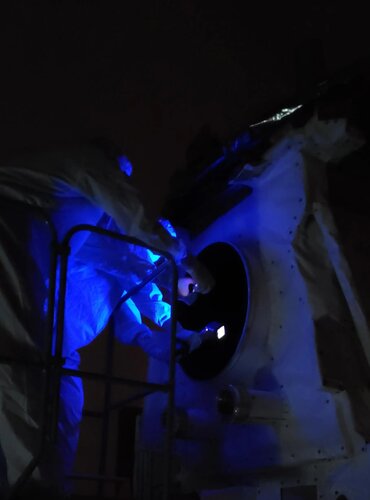
A few weeks ago, a team of engineers carefully extracted ESA's EarthCARE satellite from its protective transport container, initiating a meticulous process of inspection, testing and preparation for its liftoff later this month from the Vandenberg launch site in California.
Amidst an extensive checklist of tasks, was a rigorous effort to guarantee that the satellite is in pristine condition, underscoring the thorough attention to detail essential to making the satellite ready for launch.
China set to blast off to the far side of the moon—here's what it could discover
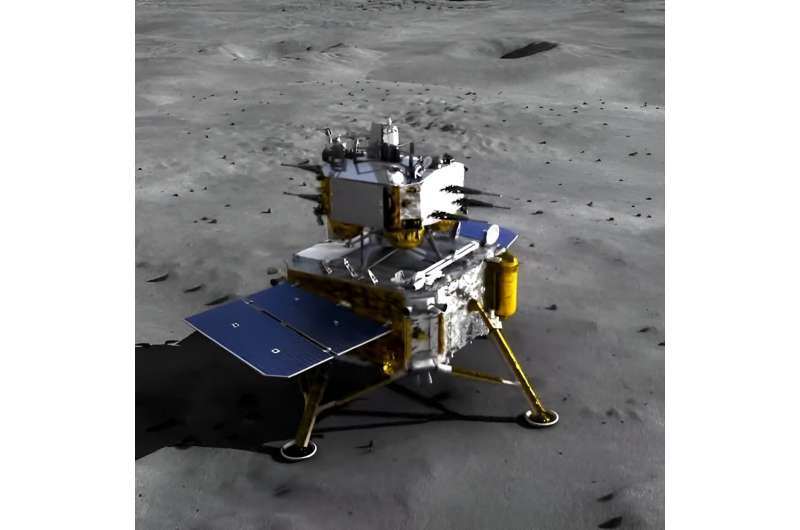
China is attempting to recover the first ever soil and rock samples from the lunar far side. The surface mission, Chang'e 6, named after the Chinese moon goddess Chang'e, is a successor to the successful sample return mission, Chang'e 5, and a part of the Chinese lunar exploration program.
The mission is set for launch using a long March 5 rocket at the Wenchang satellite launch center in Hainan province on May 3. The spacecraft due to land on the moon is projected to weigh 3,200kg carrying scientific equipment from France, Italy and the European Space Agency.
Chang'e 5 was the first lunar sample-return mission since the Soviet Union's Luna 24 in 1976. Chang'e 5 was hugely successful, returning 2kg of material from the near side. This material led to important scientific discoveries, such as the youngest lunar material ever discovered. Previously we only had much older samples returned from the Apollo missions and sampled meteorites.
Pulsed plasma rocket (PPR): Shielded, fast transits for humans to Mars
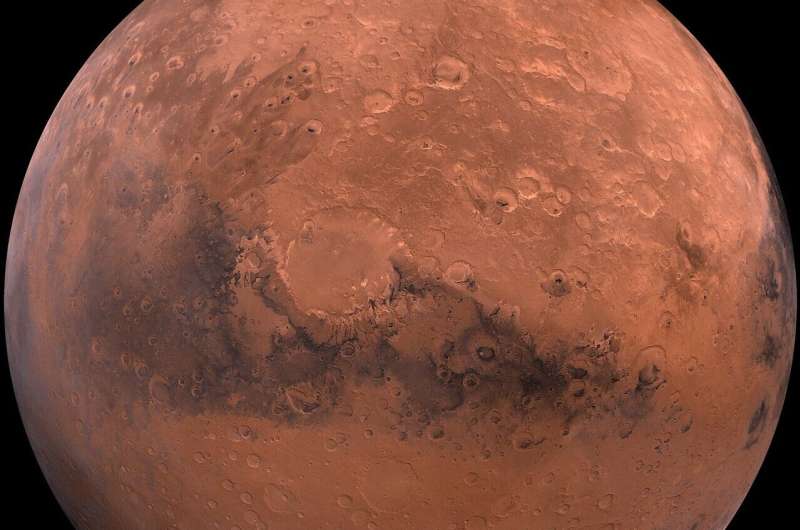
The future of a space-faring civilization will depend on the ability to move both cargo and humans efficiently and rapidly. Due to the extremely large distances that are involved in space travel, the spacecraft must reach high velocities for reasonable mission transit times. Thus, a propulsion system that produces a high thrust with a high specific impulse is essential. However, no such technologies are currently available.
Howe Industries is currently developing a propulsion system that may generate up to 100,000 N of thrust with a specific impulse (Isp) of 5,000 seconds. The Pulsed Plasma Rocket (PPR) is originally derived from the Pulsed Fission Fusion concept, but is smaller, simpler, and more affordable.
The exceptional performance of the PPR, combining high Isp and high thrust, holds the potential to revolutionize space exploration. The system's high efficiency allows for manned missions to Mars to be completed within a mere two months.
Alternatively, the PPR enables the transport of much heavier spacecraft that are equipped with shielding against Galactic Cosmic Rays, thereby reducing crew exposure to negligible levels. The system can also be used for other far range missions, such as those to the Asteroid Belt or even to the 550 AU location, where the sun's gravitational lens focuses can be considered.
Fluidic telescope (FLUTE): Enabling the next generation of large space observatories
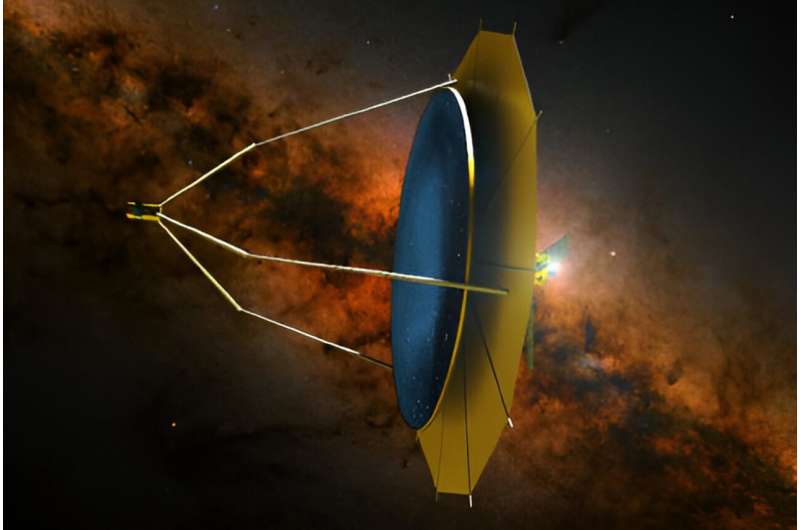
The future of space-based UV/optical/IR astronomy requires ever larger telescopes. The highest priority astrophysics targets, including Earth-like exoplanets, first generation stars, and early galaxies, are all extremely faint, which presents an ongoing challenge for current missions and is the opportunity space for next generation telescopes: larger telescopes are the primary way to address this issue.
With mission costs depending strongly on aperture diameter, scaling current space telescope technologies to aperture sizes beyond 10 m does not appear economically viable. Without a breakthrough in scalable technologies for large telescopes, future advances in astrophysics may slow down or even completely stall. Thus, there is a need for cost-effective solutions to scale space telescopes to larger sizes.
The FLUTE project aims to overcome the limitations of current approaches by paving a path towards space observatories with large aperture, unsegmented liquid primary mirrors, suitable for a variety of astronomical applications. Such mirrors would be created in space via a novel approach based on fluidic shaping in microgravity, which has already been successfully demonstrated in a laboratory neutral buoyancy environment, in parabolic microgravity flights, and aboard the International Space Station (ISS).
The Great Observatory for Long Wavelengths (GO-LoW) proposal
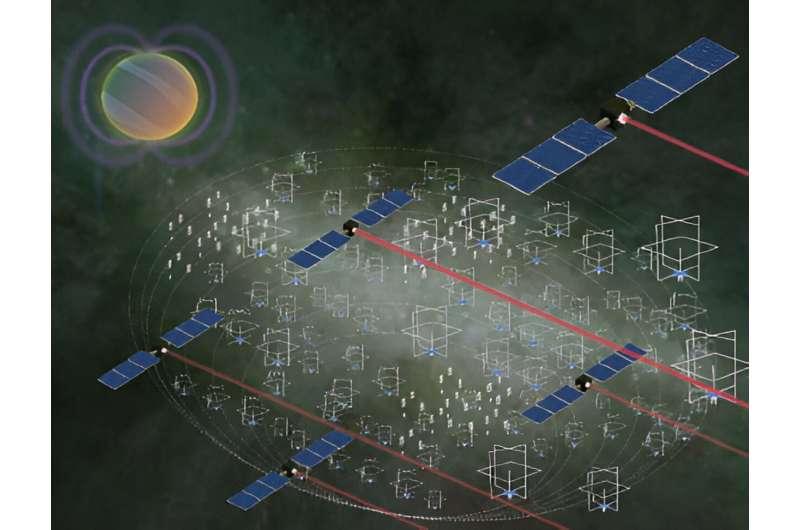
Humankind has never before seen the low frequency radio sky. It is hidden from ground-based telescopes by the Earth's ionosphere and challenging to access from space with traditional missions because the long wavelengths involved (meter- to kilometer-scale) require infeasibly massive telescopes to see clearly.
Electromagnetic radiation at these low frequencies carries crucial information about exoplanetary and stellar magnetic fields (a key ingredient to habitability), the interstellar/intergalactic medium, and the earliest stars and galaxies.
The Great Observatory for Long Wavelengths (GO-LoW) proposes an interferometric array of thousands of identical SmallSats at an Earth-Sun Lagrange point (e.g., L5) to measure the magnetic fields of terrestrial exoplanets via detections of their radio emissions at frequencies between 100 kHz and 15 MHz. Each spacecraft will carry an innovative Vector Sensor Antenna, which will enable the first survey of exoplanetary magnetic fields within 5 parsecs.
In a departure from the traditional approach of a single large and expensive spacecraft (i.e.
Japanese aerospace company captures an actual picture of space debris

Space debris is a growing problem, so companies are working on ways to mitigate it. A new satellite called ADRAS-J was built and launched to demonstrate how a spacecraft could rendezvous with a piece of space junk, paving the path for future removal.
Astroscale Japan Inc, the Japanese company behind the satellite, released a new picture from the mission showing a close image of its target space debris, a discarded Japanese H2A rocket's upper stage, captured from just a few hundred meters away.
ADRAS-J stands for Active Debris Removal by Astroscale-Japan, and is the first satellite ever to attempt to safely approach, characterize and survey the state of an existing piece of large debris. This mission will only demonstrate Rendezvous and Proximity Operations (RPO) capabilities by operating in near proximity to the piece of space debris, and gather images to assess the rocket body's movement and the condition of the structure, Astroscale Japan said.

